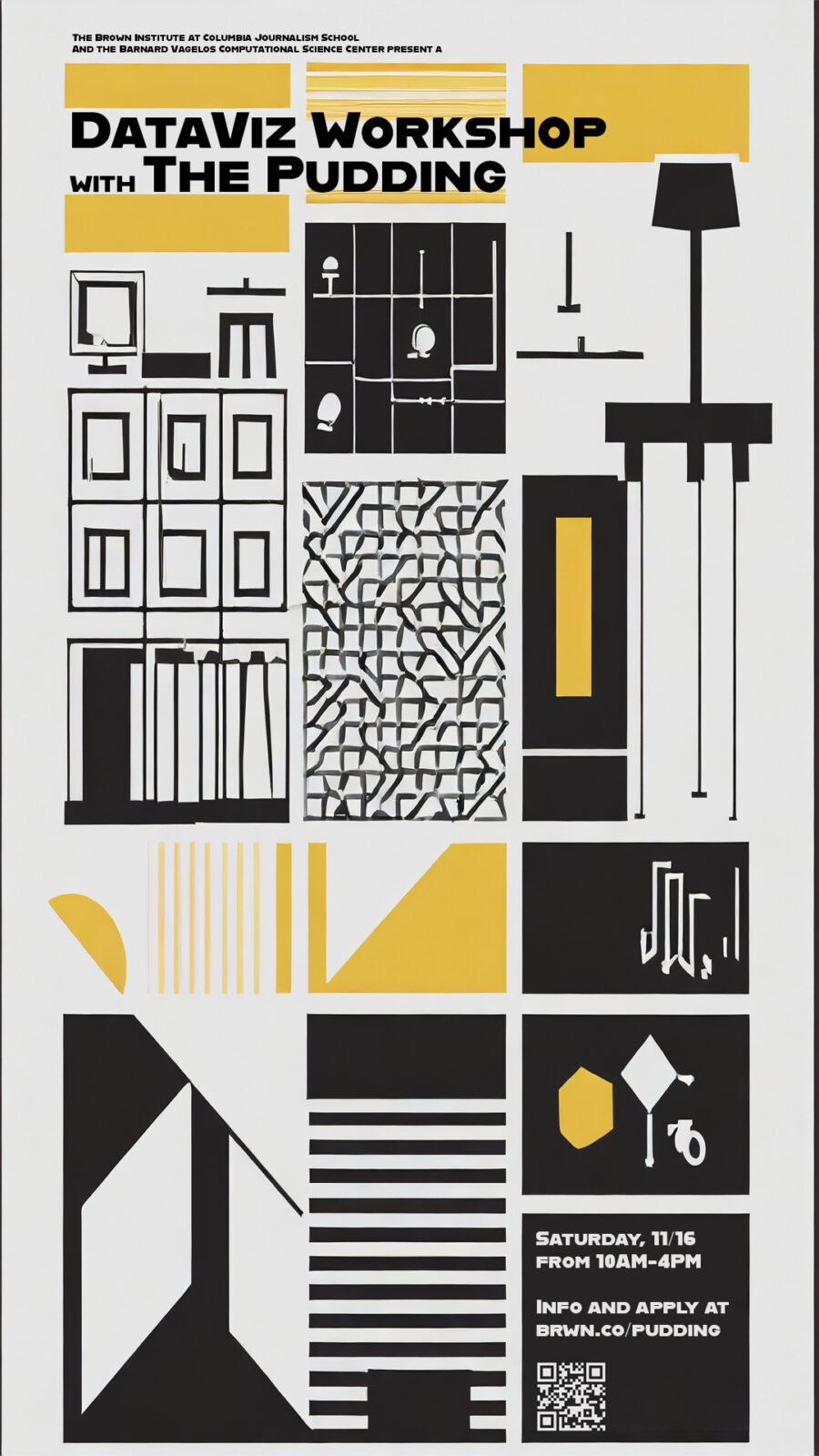Graphical (or pictorial) presentations of data have become an almost essential part of journalistic practice. Data visualization helps us see patterns in data and is an important tool for finding stories. Over the past decade, major outlets including The New York Times, Washington Post, and Reuters have been publishing data visualizations that push the idea of storytelling, creating new data-driven ways to inform and entertain. Alongside these graphics are newsrooms based entirely on data visualization, including the Kontinentalist and The Pudding.
In this day-long workshop co-sponsored by the Brown Institute and Barnard Vagelos Computational Science Center, members of The Pudding will immerse participants in their tried-and-true design process, segmented into four stages: story, data, design, and development.
In the week leading up to the workshop, accepted participants will be asked to embark on a creative journey to collect data about the NYC subway system. This data might be methodical and sourced from the MTA turnstile API, capturing the flow of commuters through the city. Or it could be more personal and observational—hand-documented notes from your daily treks, sketches of the subway’s unique quirks, maps of broken lights, or a visual catalog of tile murals across stations. Inspired by the work of Denis Wood, who mapped his neighborhood in surprising ways, and Giorgia Lupi, known for blending data and personal stories, we encourage you to be creative! Use whatever tools come natural to you, whether it’s pen and paper, a spreadsheet, or a snippet of code. Every one of us has a unique story shaped by these subterranean journeys, and we can’t wait to see what data you find interesting and valuable. Do not spend more than an hour or two on this effort.
The session will begin with Story, a throughline that should resonate with all participants of the program. As we’ve all experienced, the strongest visualizations are those with equally strong narratives. Diving deeper, students will be introduced to the realm of Data. Using curated datasets around key topics, students will seek to uncover the nuances of integrating specific, meaningful data with their narratives. The emphasis then shifts to the visual canvas, focusing on the core elements of Design. The goal is to ensure that every story is captivating both visually and narratively. And culminating the day is a glimpse into Development. While the intricacies of programming might remain in the backdrop, attendees will understand and appreciate the development scaffolding that turns their narratives and designs into dynamic interactive features.
This workshop will only be able to accommodate 24 students. Applications are due by midnight on Thursday, November 7. Notices will be sent out on Friday, November 8.
About the Presenters
Caitlyn Ralph is the Studio Director at The Pudding’s in-house data journalism agency called Polygraph, where we do the same type of visual storytelling work with the same team for different brands and organizations. Her BA is in Computer Science, her MS is in Data Viz, and her prior professional experience is in magazine journalism. She spends her working days explaining this practice as clearly as possible to clients with varying backgrounds, managing projects and the team, and crafting future strategy for both Polygraph and its sister publication The Pudding. She spends her non-working days running, taking film pictures, and on a K-pop group called Stray Kids.
Alvin Chang is an assistant professor of Journalism and Design at the New School. He’s a data and visual journalist who has worked in several newsrooms, most recently as Head of Visuals and Data at Guardian US. His work as a journalist often combines deep reporting with data analysis to help readers clearly understand the world around them. His stories often show how small decisions accrue into invisible problems like discrimination, segregation, and ultimately dehumanization. And he makes those things visible using data viz, interactives, cartoons, and videos.

